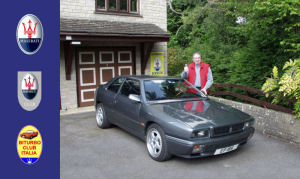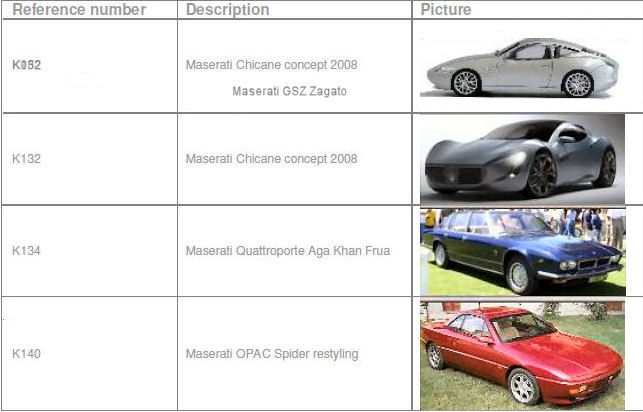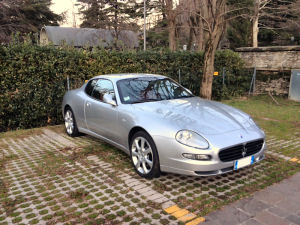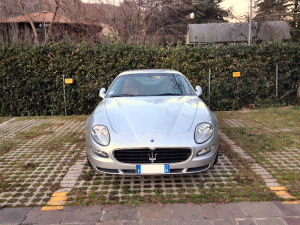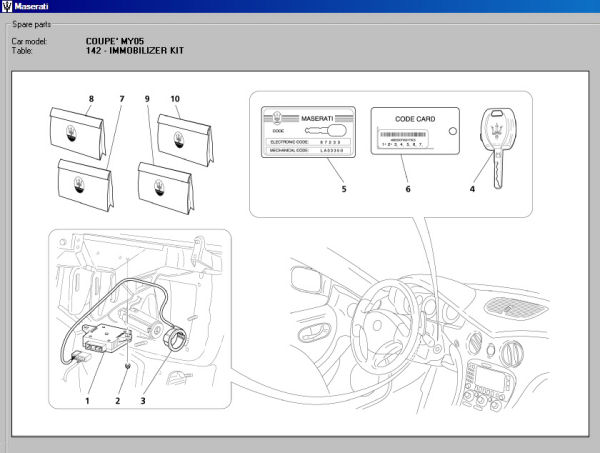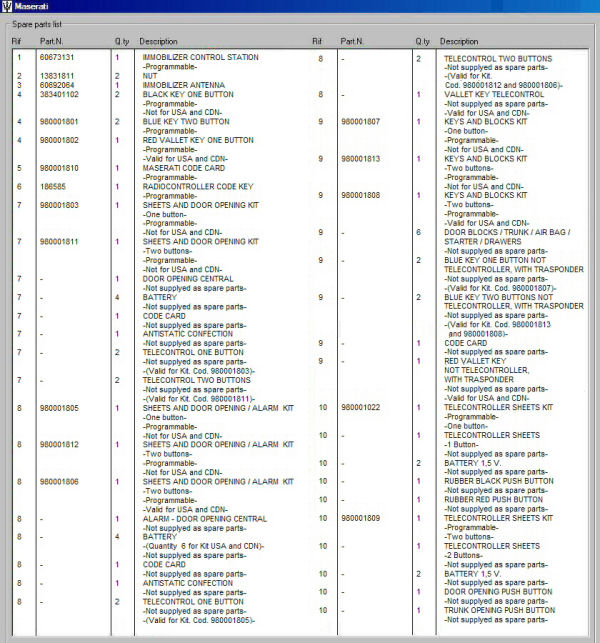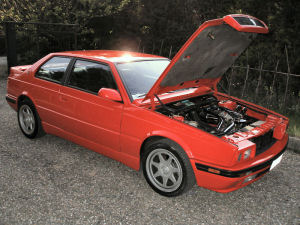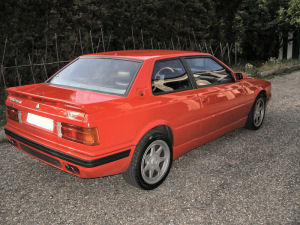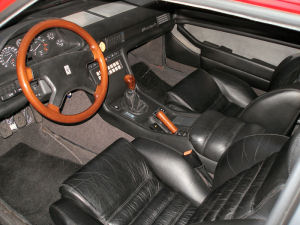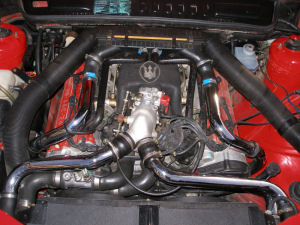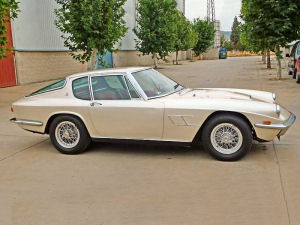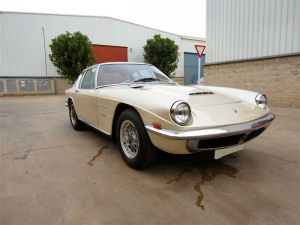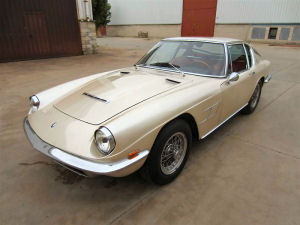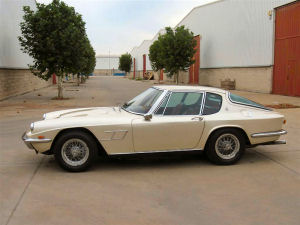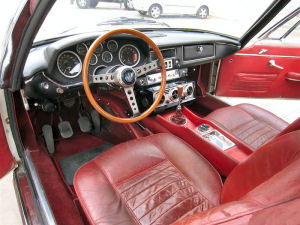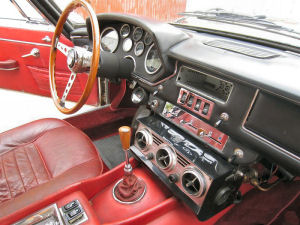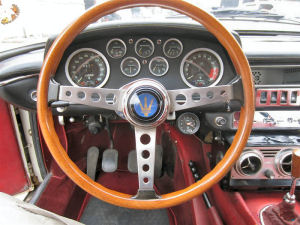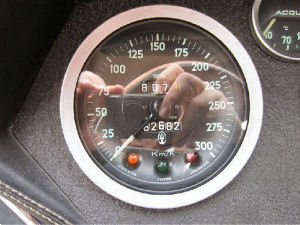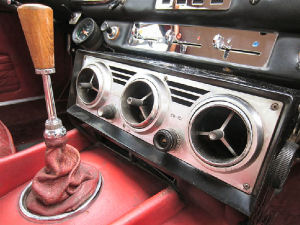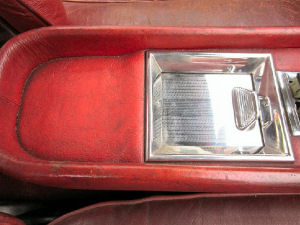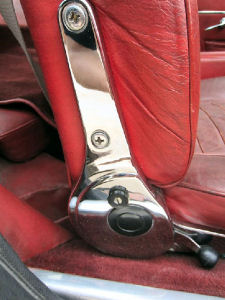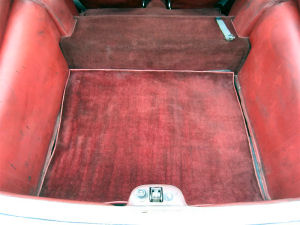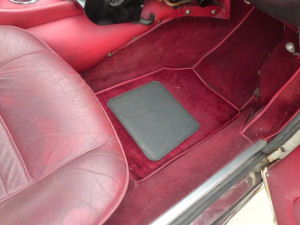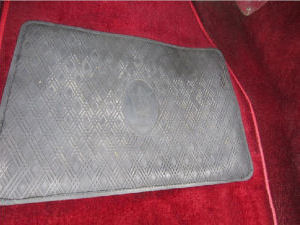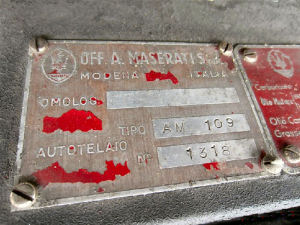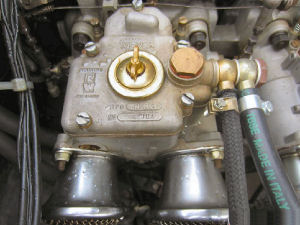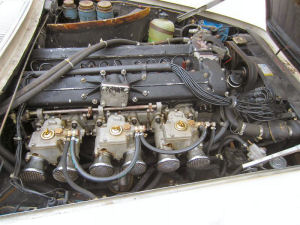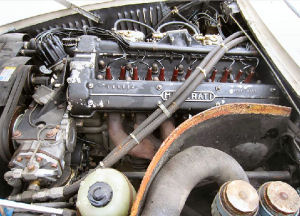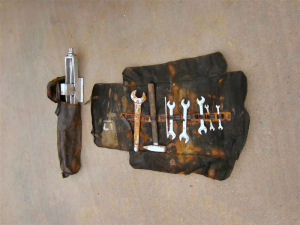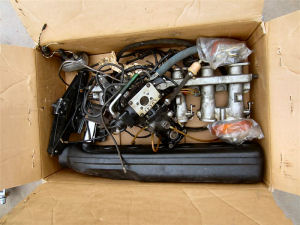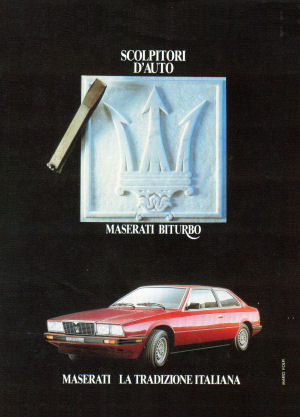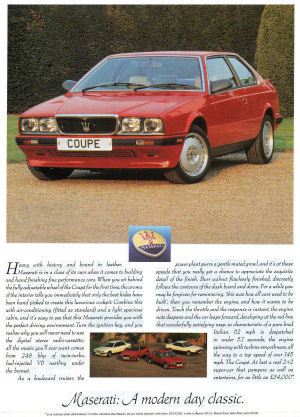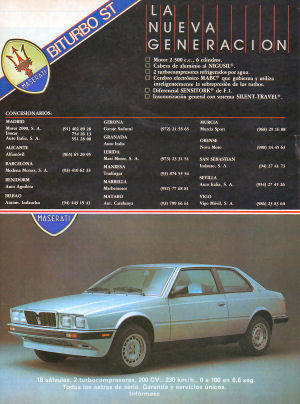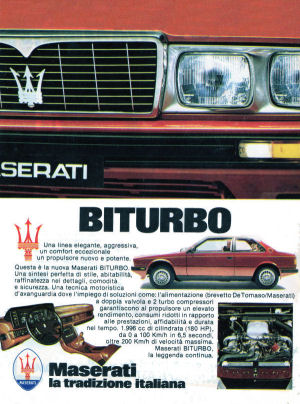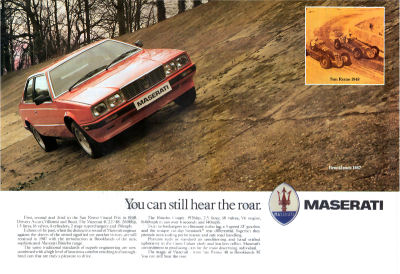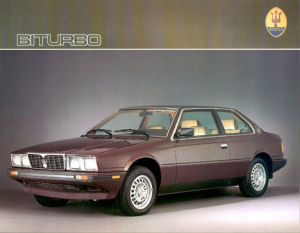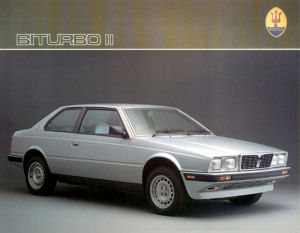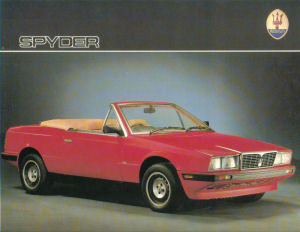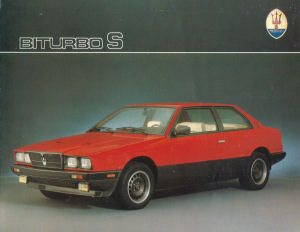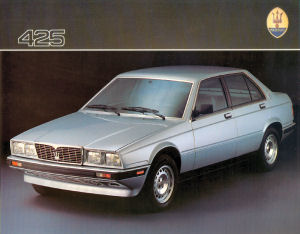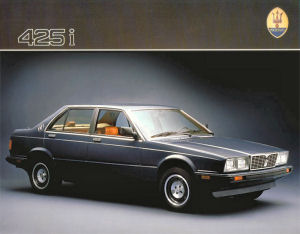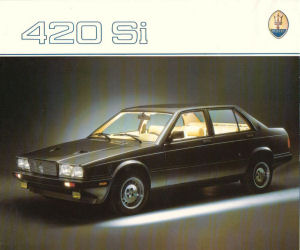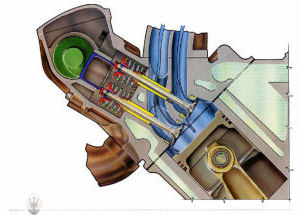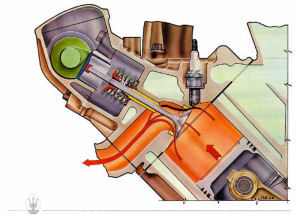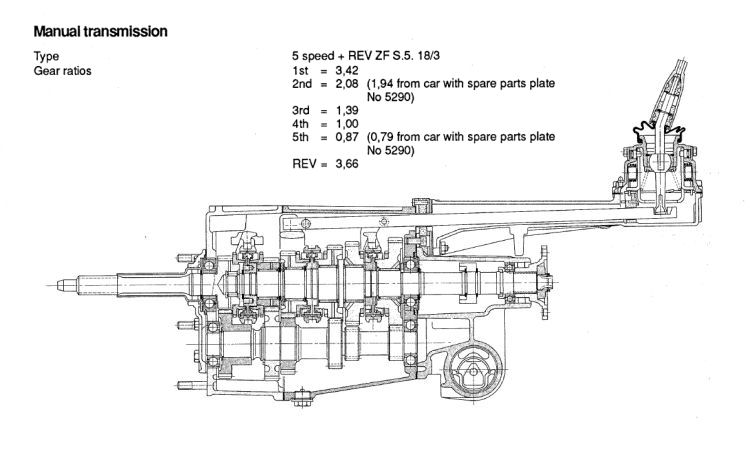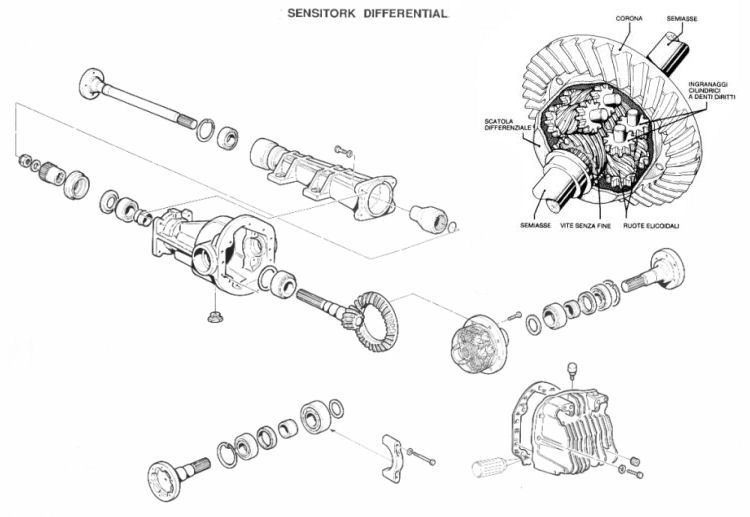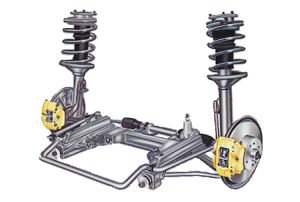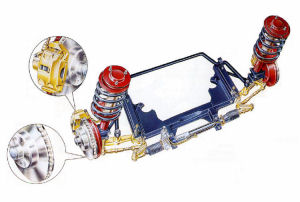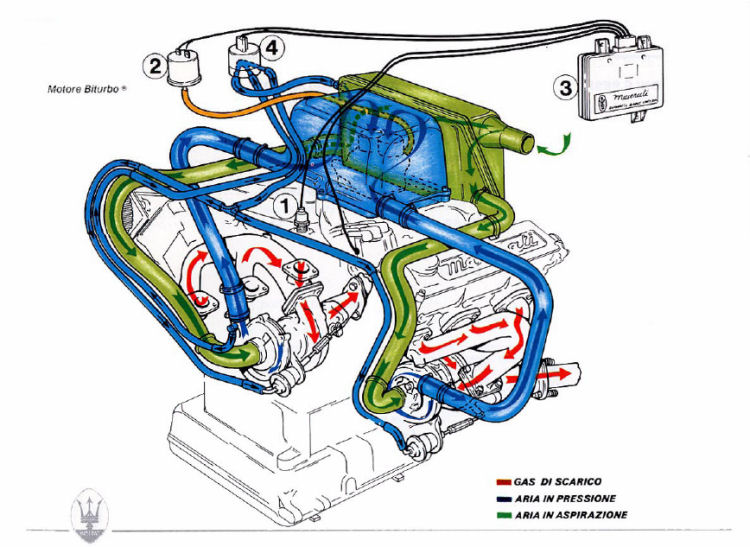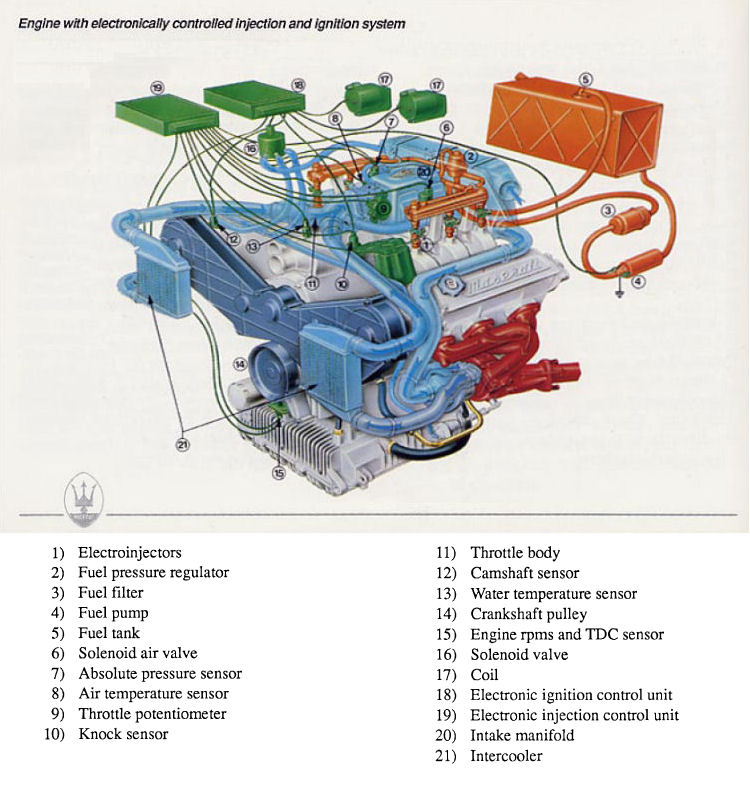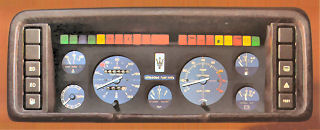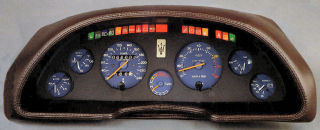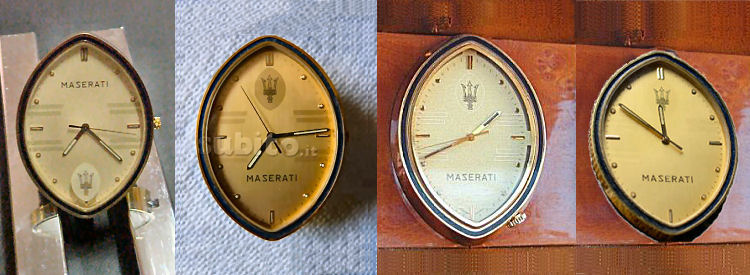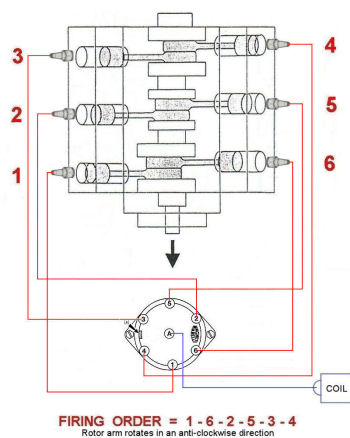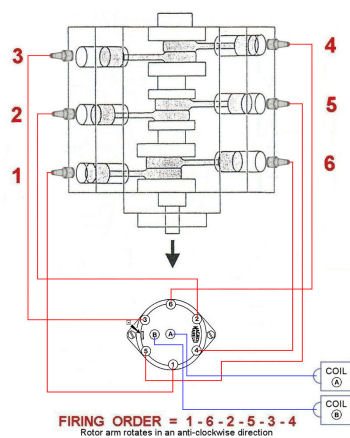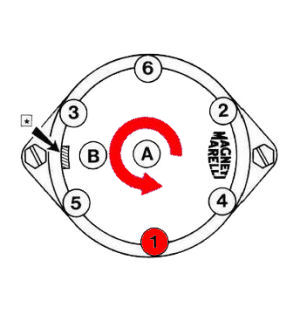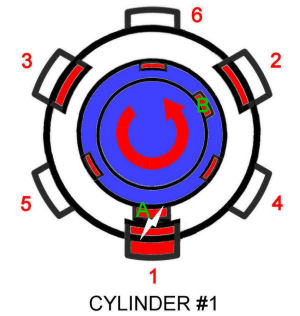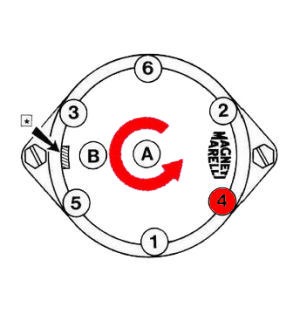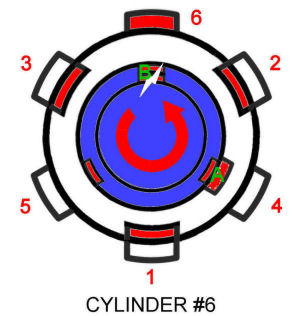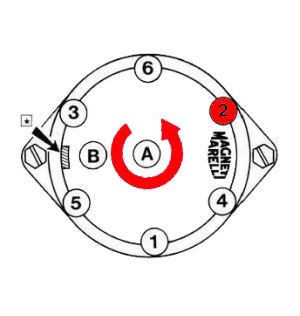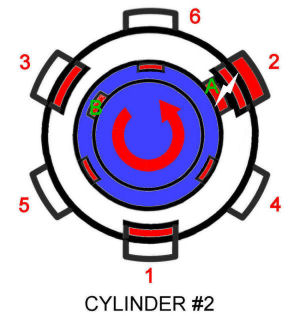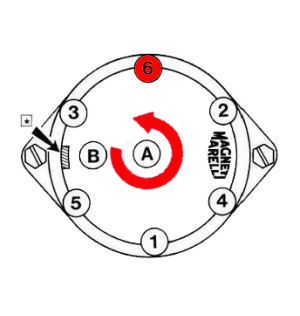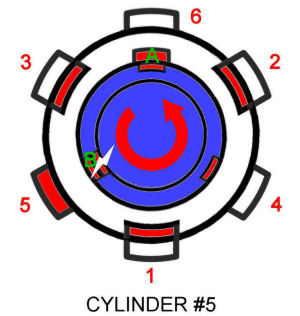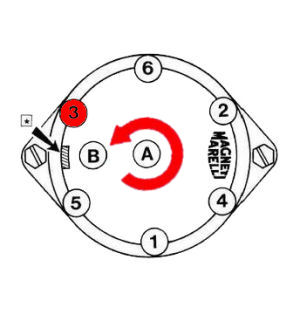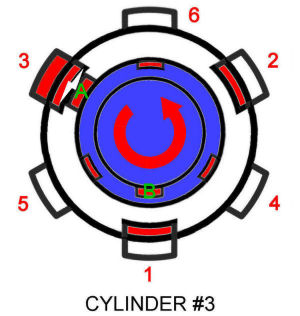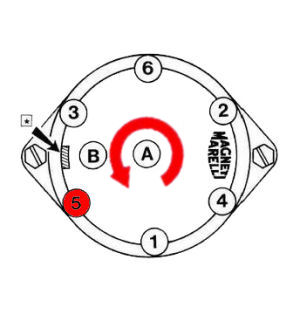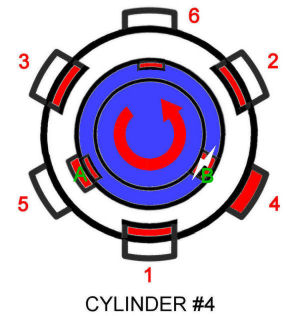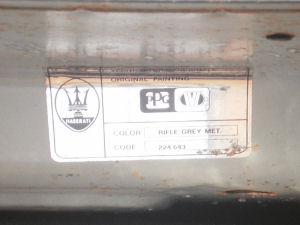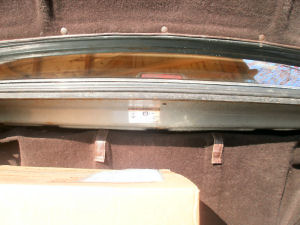1. The Premise
The following notes are the result of the direct experiences of enthusiasts and owners of the Maserati Biturbo, and are intended to provide a range of useful technical tips as a guide during the search and evaluation of these cars, produced between 1982 and 1990.
This article is intended to assist first-time buyers, and those wishing to restore a Biturbo as a classic car. In turn, we will analyze the car’s main components, that experience has led us to criticise, and intentionally avoid describing the technical characteristics of each model; for which we recommend reading the specific in-depth articles published in the numerous classic car magazines. A short list of Italian magazines is provided in the appendix below.
2. Discovering the Biturbo
Let's start by mentioning that the Biturbo was a turning point in Maserati’s production history, as it attempted to switch from an annual production rate of just a few hundred cars per annum to one of several thousand. It was, therefore, an attempt to offer a high performance grand tourer, in line with the already well-known sporting image associated with the marque, without a supercar price tag. This explains how the Biturbo was launched onto the market powered by a technically sophisticated V6 engine, with innovative solutions, such as the 3-valve per cylinder valvetrain and power via 2 turbochargers, but also with rather traditional mechanics, independent MacPherson strut front suspension, trailing arm rear suspension and front anti-roll bar. In addition, the use of generally low quality components and, above all, the hasty and incomplete fine-tuning programme, that initially led to a high rate of breakdowns, resulting in its bad reputation as being an unreliable car.
Let's be clear, however: the Biturbo is not a faulty product.
Witness the performance that even today is still exciting, the long years of production, the technical maturity gradually acquired thanks to the constant improvements made by Maserati (in the appendix we have listed the main changes) and today's growing interest in it as a classic car.
That said, let us analyze the main points that are important to understand in selecting and maintaining a Biturbo.
a. The Bodywork
Variants (2-door Coupe, 2-door Spyder and 4-door Saloon)
Initially, the Biturbo was built solely as a 2-door Coupe, only to be joined in 1984 by four-door and Spyder models. Apart from the purely aesthetic considerations, that is purely a question of personal taste, the four-door versions presented better accomodation, the Spyder version was homologated for only 2 passengers, and will cost you more and is increasing in value compared to the others. From the dynamic point of view, the body variants have slightly different driving characteristics as a result of the difference in their wheelbase, ranging from the shorter one of the Spyder, which has a livelier response (and flexing of the chassis), to the longer one of the saloon that, although having an improved stability, has its performance handicapped by the greater weight.
Corrosion
The Biturbo, especially those from the early years of production, have a major problem with rust when exposed to the elements for any lengthy period.
As with all domestic car production of that period, galvanised sheet metal, more common on German cars, wasn't used, not even protective surface treatments effective over a long period. The places where corrosion is most likely to occur are: door pillars, the windshield and rear window surrounds, front and rear light clusters housings, the door sills, the edges of the bonnet, the bulkhead well that houses the windscreen wiper motors, and the battery housing.
For adequate corrosion prevention it is always a good idea to frequently check, and clean if necessary, the door seals, as well as the water drainage holes (e.g. the sides of the wiper motor well) and act speedily in the event of damage to the paintwork or undertray.
Under-bonnet sound insulation
It's a sound-absorbing panel of synthetic material (foam) and is therefore subject to the extremely hot environment of the Biturbo engine compartment, over a period of time it tends to crumble, with the possibility that fragments may be sucked into the air filter box.
b. The Mechanics
In general, the mechanics of the Biturbo have no critical issues, but its duration and efficiency is strongly linked to the manner in which it is driven, as well as the care and consistency spent on periodic maintenance, which should be strictly carried out as per manufacturer's instructions.
Gearbox
The Biturbo uses a ZF 5-speed manual gearbox, with a dog leg first gear. It's a very reliable component that needs to be operated with a certain vigour to achieve a clean change. A 3-speed automatic transmission was available as an option, virtually unavailable on the Italian market.
Clutch
The main problem with the clutch lies with the piston within the slave cylinder. This fault becomes apparent when the pedal’s working stroke appears to shorten, ending in a complete loss of clutch control. This is due to leakage of hydraulic brake fluid through the slave cylinder’s rubber seals. The solution is either to replace the whole part, or, if the condition of the internal surface will allow, a simple overhaul by replacing the rubber seals.
Transmission
Of this component one hears of frequent cases of wear on the splined head of the propshaft that engages the differential, especially on the series one cars. This model adopted a Salisbury type differential that would unexpectedly lock the wheel that had lost grip, causing a situation difficult to control for the average motorist. This situation dramatically improved with the introduction of the Biturbo II (1985), on which was fitted the Sensitork type.
Much attention should be paid to any creaking noises that indicate a defect in the differential, which could prove a costly repair.
Brakes and steering
The Biturbo is equipped with a four disc braking system, the rear discs incorporating drums for the handbrake. The effectiveness of the system is in line with the car’s performance but the solid front discs often suffer from overheating problems. The consequences are warping, causing vibrations affecting steering when braking.
The situation was much improved with the adoption of ventilated discs, starting in 1988 with the 430 and all 4-valve models, as well as a revision of the steering arms on cars fitted with 5-bolt wheels. Special attention should be paid to wear, usually normal, of ball joints, bushes and steering joints.
Tyres
Tyres can also be a source of concern for Biturbo owners. In fact, today there is the serious problem of availability for 205/55 and 205/60 VR14 tyres, used on the S and 4-door models, which are no longer marketed in Europe.
Maserati, on request to interested parties, will issue a technical note for authorization to fit the more common sized 195/60 VR14 tyres.
c. Engine
The Maserati V6 is a very robust engine, having an uncommon 90° angle between the cylinder banks and it stands out in the field of high performance engines for its non existent "thirst" for oil. To make it last over time with maximum reliability, it requires constant and expert maintenance, as well as being well warmed-up before being driven hard.
With the engine in order, the car’s instruments (if working properly) should indicate an oil pressure of 5 kg/cm² when cold and between 2.5 and 4 kg/gm² when running at the correct temperature, which is equal to 87°C (the temperature at which the cooling fans are activated).
On pre-1984 cars, there is occasionally a problem with coolant leaking into the oil caused by leaking gaskets or seals on the cylinder head. It is necessary to check for coolant in the engine oil (also in the form of sludge foam under the oil cap) or vice versa for oily traces in the coolant. If on checking you get positive results, this indicates a problem with the cylinder head seals, that in general suffer from long periods of inactivity.
Another problem with cars produced up until 1986 came from the oil flow through the oil galleries to the cam boxes (camshaft housings). These were initially fitted with small bronze filters that can become clogged up with oil sludge. If this happens, the camshaft may seize on its bearings, breaking the timing belt, and causing serious engine damage. To cure the problem, the corrective action of removing those filters was required, which also included drilling a 1.2mm hole of equal measurement to the oil channel. The modification when complete gives a slight increase in oil pressure, eliminating the need for one or more shims from the oil pump pressure relief valve.
Many cars that left the forecourts of specialized Maserati workshops were never subjected to this upgrade. For a quick check, open the oil caps and check for the presence of a film of oil around the camshafts, or for the absence of abnormal metallic noises whilst the engine is running.
Although this will indicate that there is no problem with oil getting to the cam boxes, there is no guarantee that the bronze filters have been removed. It is therefore necessary to physically check for their presence or absence, and this can be carried out during a routine service when the valve clearances are adjusted.
Minor oil leakages from the rocker covers are frequent, and should not be a matter of concern. Finally, in order to prevent engines built before March 1987 from valve seat wear caused by the use of unleaded petrol, it is worthwhile adding an effective lead substitute additive to the fuel.
Fuel feed/delivery
Until the introduction of i versions, with multipoint electronic fuel injection, the Biturbo’s fuel supply was provided via a single twin-choke Weber carburettor housed in a plenum chamber. The carburettor cars, when tuned correctly, have a sound and response much more rewarding than the injection models, albeit with some annoying habits. First, they suffer endemic starting difficulties when hot that can often prove "laborious" for less experienced drivers. In addition, those equipped with MABC (Maserati Automatic Boost Control) have many rubber tubes/hoses which, if damaged, will prevent smooth engine operation, and therefore require careful checking.
The MABC system, through a sensor bolted to the engine block, avoids the phenomenon of pre-ignition (knocking) by correctly adjusting the fuel pressure.
So make sure that the wiring of the sensor is always efficient.
Maintenance of the carburettor cars is certainly easier, one can take it to any good mechanic, compared to the electronic fuel injection system, which requires special diagnostic equipment. On the other hand, the electronic fuel injection ensures the V6 Maserati always works accurately and reliably over time, giving easier starting when hot or cold, and in short, gives a significantly better drive.
Turbochargers
The first Biturbos were equipped with turbochargers which were cooled solely by the engine's oil lubrification system. These turbochargers can guarantee a slightly shorter life when compared the water-cooled turbos adopted later, due to higher thermal stresses to which they are subjected.
In any case, it is very important not to turn the engine off immediately after a hard drive. This way you will avoid an abrupt cessation of oil flow to the turbchargers, whilst the impellors are still in motion, and would otherwise be without adequate lubrication. Using a good quality fully synthetic motor oil is vital to ensure the longevity of the turbochargers. A consistent oily smoke from the exhaust can be an indicator to problems with at least one turbocharger, as well as the condition of the piston rings. The repair will a very expensive affair, and may well happen if you purchase a car with a poor service history.
Exhaust System
The original exhaust system of the Biturbo had silencers that were prone to corrosion, but today it can be easily replaced by commercially available high-quality spare parts that ensure a longer life. When replacing, it should be noted that the first Biturbos adopted a system, without a central silencer, with 48 mm diameter tubing compared to the S models fitted with 50 mm tubing.
Air Conditioning
The original system used a gas that has now been banned. It is advisable to change the system to Ecogas R134, used in most cars today. This means flushing the entire system, replacing all the O-rings in the system and compressor with others in Viton, the oil with Polyester oil (POE) and the expansion valve with one specifically for use with R134. There is the possibility to use Freon 12 gas as a substitute replacement, compatible with the original system, but one must accept a lower efficiency. However, it is still relatively easy to find Freon 12, tucked away in the back of the store room in some small workshops.
d. Interior trim and upholstery
The standard materials with which the interiors of the Biturbos were finished guaranteed a great aesthetic effect, but suffered from exposure to sunlight and deteriorated badly over time. The velour seats from the first series cars, although very resistant to any rips and tears, with time faded and became matted and felt-like.
The trim panels on the dashboard and all other panels are finished in an imitation leather that, apart from that used in the series one cars that proved fairly resistant, over time became noticeably cracked (shades “Terra di Siena” and “Azzurra”). The aesthetic results are devastating especially on cars that have a full leather interior, where the sides of the seats, finished in imitation leather, become ruined. We can exclude the Spyder, the 2.24v, 4.24v and in general the models that were finished, on request, in real leather from this problem.
A complete re-upholstering of the interior of a Biturbo is laborious and expensive, due to the large number of components to be re-trimmed and the unavailability of the original colours. For this reason, it’s not uncommon to come across examples that have undergone a partial re-trim, or are scarcely original; to be precise fitted out with parts from a later model.
A complete re-upholstering on a coupe, excluding seats, requires around 13 m² of leather.
Even the trim in Alcantara, of which several different components are made such as the parcel shelf and sections of the seats on the S version, can become soiled and is quite easily damaged.
Another problem one will inevitable come across, is the collapse of the roof lining due to the disintegration of the foam padding, as well as the onset of noisy vibrations from trim panels caused by the crumbling of the same foam padding glued behind them.
Instruments
The speedometer and the rev counter can, over a period of time, present an unsightly phenomenon; the warping of their needles/hands. Generally the instruments on the Biturbo are efficient and quite accurate, but are not free from systematic errors like the speedometers on the models Biturbo i and Si, produced between 86-87, which can indicate a higher speed of not less than 15Km/h.
Another important aspect concerns the analogue clock installed on the Biturbo II and later models. It’s a beautiful product, but the Swiss clock is easily removed and, therefore, constantly subject to theft (because it’s especially prized by automobilia collectors). It’s a very expensive component to replace, and it is not always easy to find an original type; on the various models, there are in fact 4 types which differ in the presence or absence of a power supply, the method of illumination and the different position of the winder. In case of failure, you can try to change the movement with that of a quartz wristwatch.
Electrical System and Components
The electrical system is in general the real “Achilles Heel” of the Biturbo. Starting from the main fuse box, located behind the glove box, through the relays and finishing at the single switches, all are prone to oxidation, with the consequent increase in electrical resistance within the circuit, overheated electrical contacts, and broken circuit. For this reason, in the event of a component failure, it always best to first check if there is any electrical contact, that usually works again with the restoration of a good contact. Unfortunately, however, these problems can lead to a dangerous situation when it concerns the fuel pump, the electronic injection management unit (engine shutdown) or the operation of the radiator fans.
Another critical component is the alternator, which may require repair or relatively frequent replacement.
3. In Conclusion
With this guide, without any presumption of it being comprehensive, we hope to have provided a useful overview of items that the Biturbo enthusiast would do well to take note of. Because it is only by taking patient and expert care, as one must with most twenty year old cars, that you will enjoy these exclusive products of the Italian automotive industry.
I would like to take this opportunity to thank Sig Angelo for allowing me to translate and publish his highly informative and entertaining article. Thanks also to Roger Harrison for his help with the translation.
4. Appendix
Articles published in Italy
RUOTECLASSICHE - Marzo 2003
AUTOMOBILLISMO D'EPOCA - Settembre 2004
GRANTURISMO - Numero 11
AUTOMOBILLISMO D'EPOCA - Giugno 2008
| Innovations Introduced During The Production Years |
| Innovation |
Year |
Note |
| MABC (Maserati Automatic Boost Control) |
1983 |
|
| Air to Air Intercoolers |
1984 |
Biturbo S |
Sensitork Rear Differential
Water-cooled Turbochargers
Aluminium liners treated with Nigusil |
1985 |
|
| Electronic Fuel Injection |
1986 |
|
| Hardened steel valve seats |
1987 |
From 18-valve Engine No. 15048
and 24-valve Engine No. 802236 |
| Ventilated front discs |
1988 |
|
| 4-valve per cylinder engines |
1989 |
|
